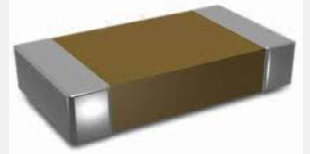The Components Engineering Library
Site Navigation
| Vender Catalogs | ||
| Resistors | Capacitors | Inductors |
Capacitors (Fixed)
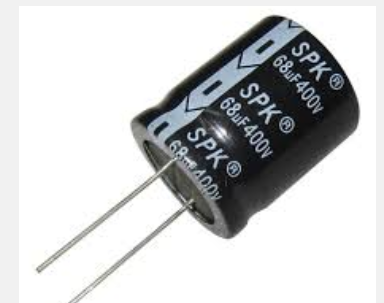
Making crosses for Capacitors can be simply done by matching parameters. Our venders (left column) can help in making matches and purchases. The sales reps on the right column can find sources.
Capacitance (Farad) Electrical Symbol
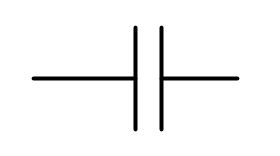
| Parameter | Units |
|---|---|
| Capacitance Value | Farad |
| Rated Voltage | Volts |
| Polarization | (Positive / Negative) or Both |

The unit of Capacitance is Farad. This unit is commonly a very small.
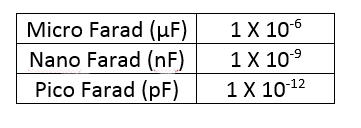
The value of Farad needs to match closely (see tolerance).
The value of farads must match the value of farads needed to achieve a matching device. If values cannot be matched. Connecting capacitance in parallel or series can achieve a matching value. Total capacitance in series can be calculated with this formula.
C total = 1/C1 + 1/C2 + 1/C3 + 1/Cn
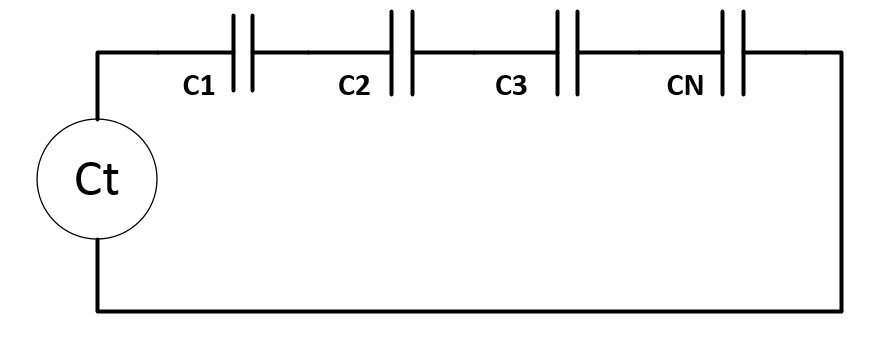
Capacitance in Parallel is additive and can be calculated with this formula.
C total = C1 + C2 + C3 + Cn
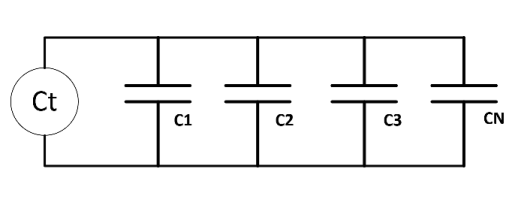
Rated Voltage
Is the amount of voltage a capacitor this voltage must not be exceeded.
Rated in D.C. volts this parameter must be the same as previously used or more.
Note: In normal design work, this value is double the known maximum voltage seen by this capacitor.
Polarization
Capacitors are constructed two ways. Polarized and NonPolarized.
Electrolytic Capacitors mostly come Polarized. Meaning they have a negative symbol pointing to one of the leads. When connecting into the circuit polarization must be observed. Some more expensive Electrolytic capacitors can come “NonPolarized”.

Polarized Capacitor (Notice (-) marking at one of its leads
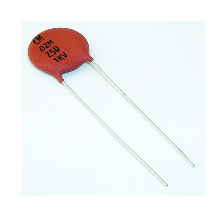
NonPolarized Capacitor (No (+) or (-) Marking
Leakage Current
A capacitor has, a leakage current that flows through the dielectric (Material of Capacitor). This will cause the capacitor not to hold its charge for the time needed. Low leakage capacitors are available and should be sought out if needed.
Tolerance
It is important to match the “Tolerance” of the capacitor. The Tolerance is the accuracy of the value of capacitance (Farad). The degree of Tolerance is measured in percent. Some timing circuits like oscillators may require a high tolerance for better precision.
Dielectric Materials
There are several types of dielectric material when considering a match for capacitors. The dielectric material determines the electrical characteristics of the capacitor.
The most common dielectrics are:
Ceramics, Plastic films, Aluminum, Tantalum, Niobium mica, glass, paper, air, vacuum
Types of Capacitors
Electrolytic 68uF, 400VDC, Radial

Electrolytic 20uF, 350VDC, Axial
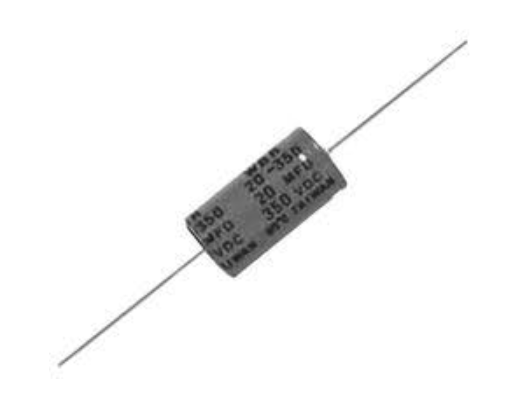
Electrolytic 38uF +/- 5 Percent , 450VDC, Can
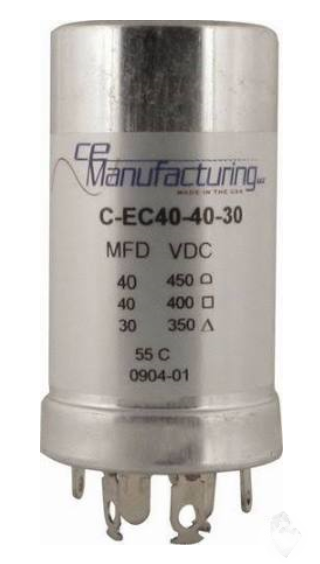
NonPolarized Capacitor .02 uF, 1000VDC Disk Radial

Surface Mount Capacitor (SMT)
1000pF, 2000V Ceramic SMT Capacitor
